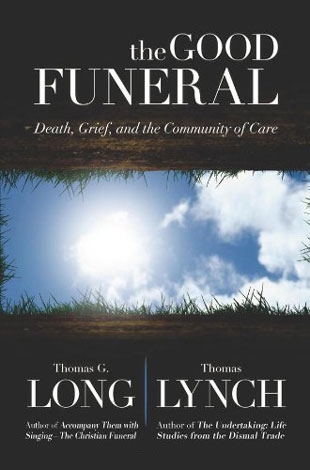"When we pare away the nonessentials of death, then, what do we see? Two things: an act of human necessity and a local folk drama saturated with meaning. As for the human necessity, when someone dies, the body must be moved from the place of death to somewhere else — the grave, the pit, the sea, the fire. The bodies of the dead are never left among the living but are always carried by the living to a place of disposition. Moving the body from here to there is not an option; it's a necessity.
"But when we remember our humanity, this act of necessity is never done in a perfunctory way, as if the dead were of no consequence, as if the living did not have before them yet again the never-ending task of discovering and proclaiming meaning in this and all deaths. The actions are simple — caring tenderly for the one who is dead, washing and dressing the body, placing the body with care into a coffin, gathering with family and neighbors, walking with the deceased to the place of farewell, reciting words that say what is happening here. But these simple actions are not discrete events, like beads without a string. Taken together they form an enacted narrative, a script for a piece of community theater infused with powerful meanings. When people perform this script, when they accomplish these ancient actions, over and again on the occasion of each new death, they announce, in a language deeper than mere words and broader than a single creed, that the dead are of great worth and that we are accompanying them as they travel from one place to another.
"We know in our DNA that this is the human thing to do. We do not throw the dead onto trash heaps. We treat the bodies of the dead with reverence. We search for them diligently when they are lost. We wash them, anoint them with fragrances, set their features lovingly, dress them with honor, and stay awake with them and guard them through the night. And then we accompany them to the place of farewell. There is embrace and there is release. We gather those we love into our arms, and then we yield to the truth that we must eventually let them go. Taking the dead to the place of disposition is not simply a trip across the graveyard; it is a journey, a crossing from here to there. By walking with the dead on this last passage, we are reminding ourselves and telling all who will listen that life is a story with beginnings, middles, and ends, and that our lives will be markedly different at the end of the day than they were at first light."
